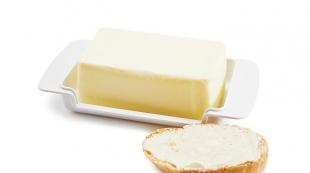Vibrating sieve sv 1400 2. Vibrating sieves type sv
Coarse cleaning agents are mainly represented by mechanical vibrating units (vibrating screens) capable of removing large sludge larger than 100 microns. without much disturbance in the rate of pumping of the drilling fluid.
In vibrating screens, cuttings are separated from the drilling fluid using a screening device. Single-tier twin vibrating screens SV-2, SV-2B, LVS-1 and single-tier double-screen vibrating screens VS-1 are used. According to the principle of operation, all vibrating screens are similar.
The figure shows a schematic representation of a vibrating sieve. Its main elements are as follows: a tray for collecting a purified solution 7, a receiver with a flow distributor 2, a vibrating frame 5 with a grid 4, a vibrator 3, shock absorbers 6.

Vibrating screen SV-2
There are no cardinal differences among vibrosieves. So, the vibrating screen SV-2 consists of a welded frame 1 with a receiving tank, on which a distribution chute 2, two electric motors 3 are installed to drive the vibrating frame 5 and shock absorbers 6. Each of the two vibrating frames rests on four rubber shock absorbers, has a vibrator with an eccentric shaft , which is driven by an electric motor by a V-belt transmission, closed by a fence 4. A working mesh is stretched between the drums 7. Grids are inclined horizontally at an angle of 12-18 degrees.
In VS-1, a replaceable cassette with nets is fixed on a vibrating frame. The vibrating frame rests on four shock absorbers made of coiled coil springs attached to the sieve frame.
The frame consists of a base, two sidewalls, bolted together. The sidewalls are additionally fastened with a spacer, a drive frame, and a vibrator housing. A shaft with imbalances is installed in the vibrator housing, providing the necessary oscillation amplitude. An electric motor is located on the drive frame, connected to the vibrator by a V-belt drive. On the opposite side of the drive frame, weights are installed to balance the drive.
During installation, vibrating screens are installed on the circulation system cleaning unit above the tank and fastened with bolts. Deviations of a bed from horizontal position - no more than 5 mm. Around the vibrating screen, a platform with a fence with a width of at least 0.75 m is mounted. The inlet pipe (chute) of the vibrating screen is connected by a pipe to the wellhead. To bring the vibrating screen into working position, unscrew the four transport bolts securing the vibrating frame. Install the electric motor and put on two V-belts. When installing cassettes with nets, check the presence of rubber protrusions on the base of the net and the correctness of their location. The cassettes are installed in such a way that equal gaps remain on each side, after which the bolts are tightened with clamps until the spring coils touch.
Vibrating sieve LVS 1 with linear vibrations is designed by analogy with the best foreign samples of similar products. Linear single-tier vibrating sieve LVS-1 is designed to clean the drilling fluid from drilled rock particles when drilling oil and gas wells. Equipped with two flexible three-layer cassettes. Depending on the version of the equipment, the magnitude of the disturbing force of the vibrator can be adjusted.
Specifications vibrating screen LAN 1
|
Name of parameters |
||
|
Grid type |
flexible, tensile |
flexible, tensile |
|
Cassette size, mm |
||
|
Vibrating frame oscillation frequency, Hz |
||
|
Vibrating frame installation angle relative to the base, deg. |
||
|
Total installed power of two motor vibrators, kW, not more than |
||
|
Product weight, kg. no more |
||
|
Options |
Versions |
|
|
Explosion proof 1Exd |
Increased reliability from explosion II Exe |
|
|
Zone - V-1 |
||
|
Closed spaces and open spaces |
Only open outdoor spaces |

Linear vibrating sieve with one layer of filter meshes LVS-1K with rigid frame cassettes (hereinafter LVS 1K) is designed to clean drilling fluid from cuttings when drilling oil and gas wells in a temperate macroclimatic region in accordance with GOST 16350. The temperature of the working environment during operation is not below 1°C.
The scope of application is the industries associated with the purification of liquids from impurities (mechanical particles), dehydration of sludge pollution. Depending on the version of the equipment, the magnitude of the disturbing force of the vibrator can be adjusted.
Specifications vibrating sieve LVS-1K
|
Name of parameters |
LAN 1K with "Brandt" rigid frame cassettes |
|
|
Throughput, m3/s, not less than |
||
|
Grid type |
rigid, frame |
rigid, frame |
|
Number of cassettes |
||
|
Working surface, m2, not less |
||
|
Cassette size, mm |
||
|
Vibrating frame vibration frequency, Hz |
||
|
Amplitude of oscillations of the vibrating frame, mm |
||
|
Maximum total disturbing force of the vibrator motor, kN |
||
|
Vibrating frame installation angle relative to the base, ° |
||
|
Total installed power of two motor-vibrators, kW, no more |
||
|
Specific power, kWm3 sec1, no more |
||
|
Overall dimensions, mm no more than length width height |
||
|
Product weight, kg. no more |
||
|
Options |
Versions |
|
|
Degree of explosion protection, marking |
Explosion proof 1Exd |
Increased reliability from explosion II Exe |
|
Permitted zone, chapter 7.3 PUE-00 |
Zone - V-1 |
|
|
Permitted conditions of use |
enclosed spaces and open spaces |
Only open outdoor |
Buy vibrating sieve by favorable price You can contact our company "Prommash". For more than 10 years we have been successfully designing and manufacturing business equipment.
Vibrating sieves are designed to classify bulk materials into particles of different sizes.
Vibrating screens are used for bulk materials and powders to separate them into fractions. In the food industry, they are used to screen powdered sugar, soda, table salt, milk powder, nuts, cereals, coffee, spices, sugar and other products.

Vibrating sieves are used in the production building materials: for sieving lime, gypsum, fly ash, sand, kaolin, mineral powder. In the oil industry, vibrating screens are installed for the classification of catalysts, in the paint and varnish industry for pigments and powder paints, in pulp and paper mills for sifting kaolin, chalk and starch, in woodworking industries for separating wood flour and sawdust into fractions.
In addition, vibrating screens can be used for screening crumb rubber, screening of copper, nickel, aluminum and other metal powders, classification of corundum, etc.

Specifications of vibrating screen:
Payment:
75% prepayment, 25% when the equipment is ready for shipment.
Equipment delivery time: 35 r / days.
Delivery: at the expense of the buyer transport companies.
The principle of operation of the vibrating sieve
Loose mass is evenly fed through the upper central pipe with the help of a feeding device (sluice or screw feeder, chain conveyor, dispenser, etc.) into a sieve (or into a battery of sieves - depends on the design).
Passing successively through several sieves with different mesh sizes, the initial product is separated into fractions due to vibrations of the vibrating frame. Particles smaller than the sieve cell pass through it, while larger particles are retained on the mesh and, under the influence of vibrations, are discharged through the side pipe. In one vibrating separator, from 1 to 4 decks (sieves) can be installed, which ensures the separation of material from 2 to 5 fractions.
The three-dimensional movement of the screening surface combines the movement of a flat screen classifier and a screen.

Benefits of round shakers
- the possibility of selecting the optimal mode for a particular bulk product
- high sieving efficiency
- reliability
- dust tightness of the device
- maintainability (replacement of the frame with a mesh, if necessary, is carried out in 10 ... 15 minutes)
- continuous operation
- low energy intensity
CALL US ON THE NUMBERS GIVEN TO BUY A VIBRATING SIEVE
OR REQUEST ADDITIONAL INFORMATION FROM OUR MANAGERS.
Guarantees:
We provide warranty and post-warranty technical support for the sold equipment, customer information support, we perform any types of maintenance and repair work, including the manufacture of necessary spare parts.
_____________________________________
We design, manufacture and supply various equipment, incl. and on individual orders from individuals or organizations.
The platform vibrators are mounted on opposite sides of the frame at an angle of 180° relative to each other and create a three-dimensional vibration of the vibrating screen. Changing the angle of inclination of the vibrators allows you to change the direction of vibration, and the regulation of the location of unbalances and the regulation of the frequency of rotation of the vibrators allows you to change the speed and performance of the vibrating screen. Thus, it is possible to change the nature of the movement of the product and its residence time on the sieve, which makes it possible to use a vibrating sieve for sifting a wide range of powders with different particle sizes and shapes, bulk density, compactability and stickiness.
Loose mass is evenly fed through the upper central pipe with the help of a feeding device (sluice or screw feeder, chain conveyor, batcher, etc.) into the sieve. Passing successively through several sieves with different mesh sizes, the initial product is separated into fractions due to vibrations of the vibrating frame. Particles smaller than the sieve cell pass through it, while larger particles are retained on the mesh and, under the influence of vibrations, are discharged through the side pipe. In one vibrating separator, from 1 to 3 decks (sieves) can be installed, which ensures the separation of material from 2 to 4 fractions.
Four sizes developed vibrating screen SV:
vibrating sieve SV-0.4; vibrating sieve SV-0.6; vibrating screen SV-0.9 and vibrating screen SV-1.2.
The vibrating screen is available in stainless steel or carbon steel.
Advantages of the vibrating sieve:
- high sieving efficiency
- the ability to select the optimal modes for various materials
- high degree of maintainability. (replacement of the frame with a mesh, if necessary, is carried out in 10 ...
- high reliability
- dust tightness of the device
- continuous operation
- low energy intensity
- low dynamic loads on the base
Feature of vibrating sieves type CB:
A feature of the operation of vibrating sieves of the SV type is the nature of the oscillations of the screening surfaces. Unlike other designs of vibrating sieves, CB-type vibrating sieves use spatial (three-component) vibration of screening surfaces. This nature of the oscillations provides a continuous change in the magnitude and direction of inertial loads, which makes it possible to obtain optimal sieving conditions, especially for materials with particle sizes close to those of the mesh cell. The three-dimensional movement of the screening surface combines the movement of a flat screen classifier and a screen.
Application:
In the food industry - factories for the production of powdered milk, confectionery factories, oil and fat plants, meat processing plants, manufacturers of flavorings and spices and many other enterprises; in the chemical industry - enterprises manufacturing welding electrodes, synthetic detergents, chemical fertilizers, PVC; in the construction industry - dry building mixes; in pharmaceutics - for control screening of drugs and in many other technological processes screening of loose materials.
Technical specifications
Technical characteristics of the vibrating sieve:
|
Indicators |
Shaker designation |
|||
|
SV-0.4 (K-528) |
SV-0.6 (K-377) |
SV-0.9 (K-444) |
SV-1,2 (K-344) |
|
|
Hull diameter, m |
||||
|
Sieve surface, m 2 |
||||
|
Number of factions |
||||
|
Engine power, kW |
||||
|
Dimensions: |
740 |
1237 |
1330 |
1565 |
|
Weight, kg |
||||
Technical description:
1 - cover, 2 - shell, 3 - mesh on the frame, 4 - discharge pipe, 5 - vibration isolator, 6 - vibration exciter, 7 - frame, 8 - electric motor
Vibrating sieve (vibrating sieve) SV is a single-mass oscillatory system of a resonant type, the oscillating parts of which include a housing with sieves, an unbalanced vibration exciter connected to the housing, which sets the vibrations to the system. The rotation of the vibration exciter is transmitted from the engine pos.8 through the clutch. The oscillating parts of the sieve rest on the frame pos.7 through vibration isolators pos.5.
The driving force of the vibration exciter is created by two unbalances rotating on a vertical shaft: the upper one, located approximately in the center of mass of the oscillating parts of the sieve, and the lower one.
The sieve vibrates with a frequency equal to the motor shaft rotation frequency, and each point of the oscillating parts moves along a closed elliptical trajectory located at an angle to the horizontal plane. The dimensions of the oscillation trajectory (horizontal and vertical amplitudes) depend on the magnitude of the static moments of the upper and lower unbalances.
The starting material is fed into the loading pipe (see Fig.).
The fractions obtained after sifting leave the sieve through the discharge nozzles.
The intensity of screening is regulated by the amplitudes and the angle of rotation between the upper and lower unbalances.
The horizontal and vertical oscillation amplitudes are controlled by changing the static moment, respectively, the upper and lower unbalances.
"Vibrotechnika" develops, manufactures and introduces vibrating sieves (CB-0.4, CB-0.6, CB-0.9, CB-1.2).
Vibrating sieves are designed for dust-tight sifting into several fractions of loose materials, not prone to sticking, no larger than 30 mm, with temperatures up to 323K (+50°C).
They are a single-mass freely oscillating resonant system. They consist of a working body, a vibration exciter, elastic links, a frame and an engine. The working body includes a set of cylindrical shells and screening surfaces in the form of grids, mounted on frames, assembled with quick-release clamps, the rotation of the vibration exciter shaft is transmitted from the engine through an elastic petal clutch. The loading and unloading pipes are equipped with rubber seals.
They are high-performance, efficient and reliable devices for sieving powdery, granular and lumpy materials and can be used for dewatering materials. Long-term operating experience shows that vibrating screens are not inferior to foreign analogues in terms of their technical level and are significantly cheaper.
The performance of the vibrating screens is subject to experimental determination in each specific case, depending on the properties of the processed material and the size of the grid cells. Vibrating screens are made with a working body of carbon or stainless steel.
When delivered, the sieves are usually equipped with meshes with a mesh size of 2 and 0.63 mm. Together with the screens, for an additional fee, devices for tensioning the screens on the frames and a spare frame are supplied, which can significantly reduce the time to replace the screen.
 |
 |
|---|
| Indicators | Meaning | |||
|
|
|
|
|
|
| Hull diameter, m | 0,4 | 0,6 | 0,9 | 1.2 |
| Sieve surface, m2 | 0,11 | 0,28 | 0,6 | 1,0 |
| Number of factions | 2...3 | 2...4 | ||
| Engine power, kW | 0,25 | 0,37 | 0,75 | 1,1 |
| Overall dimensions, max: | ||||
| height, mm | 740 | 1237 | 1380 | 1565 |
| length, mm | 590 | 1000 | 1300 | 1720 |
| width, mm | 565 | 1000 | 1300 | 1720 |
| Weight, max, kg | 51 | 143 | 250 | 444 |














